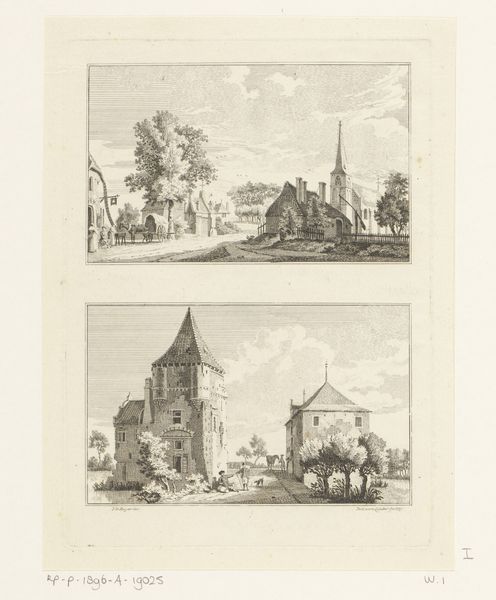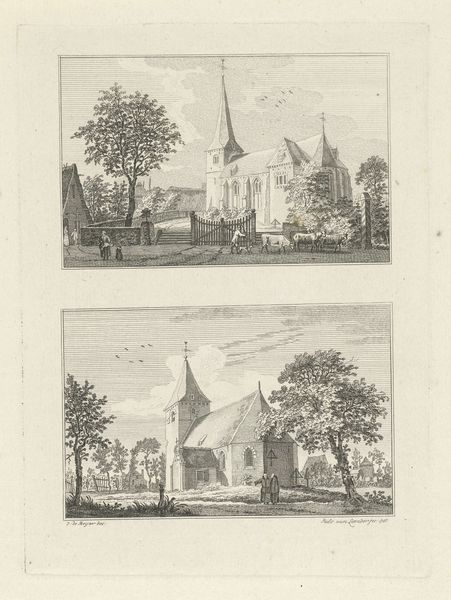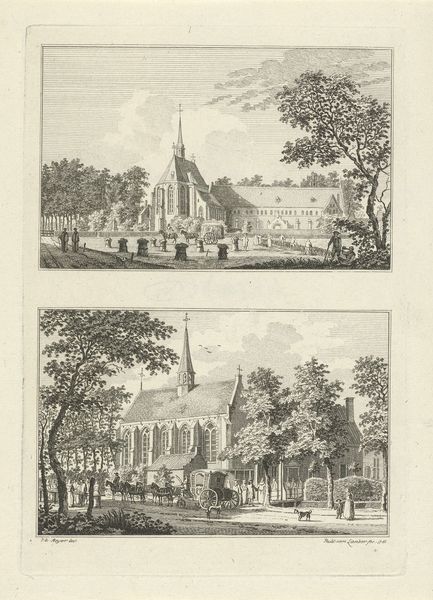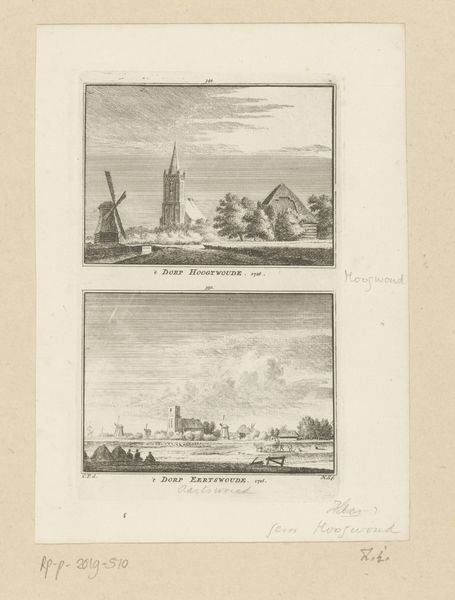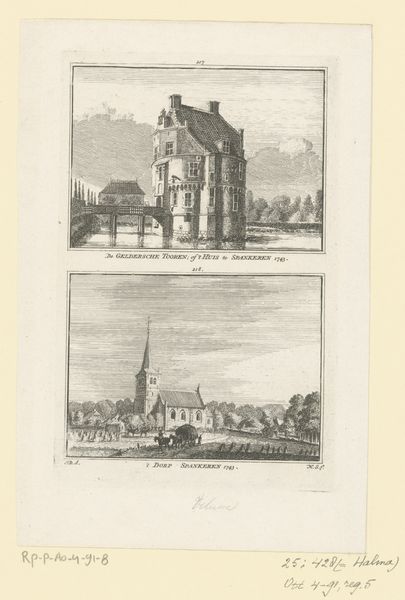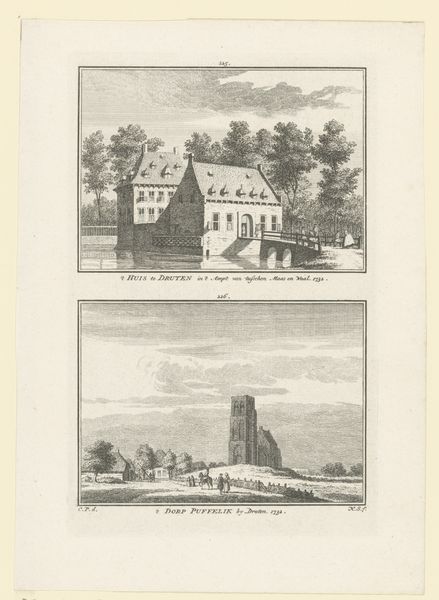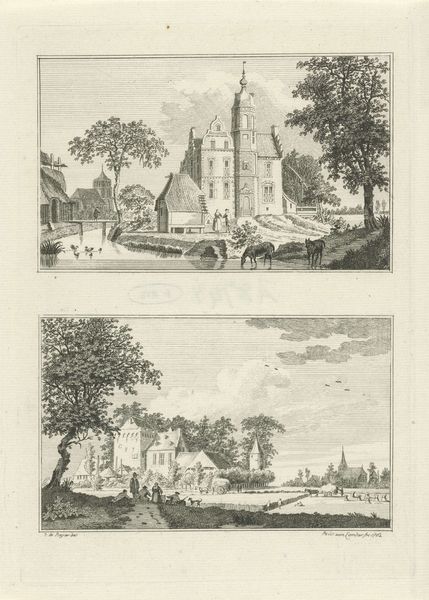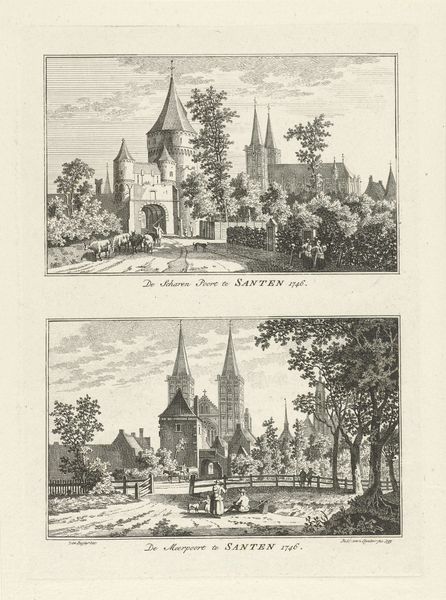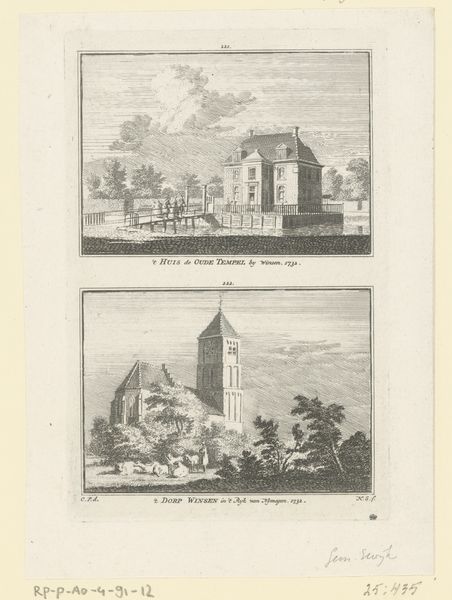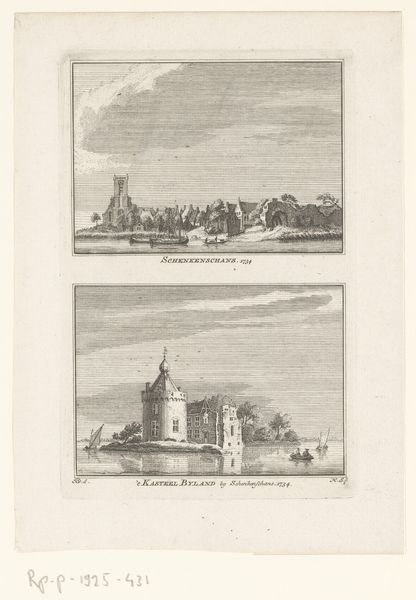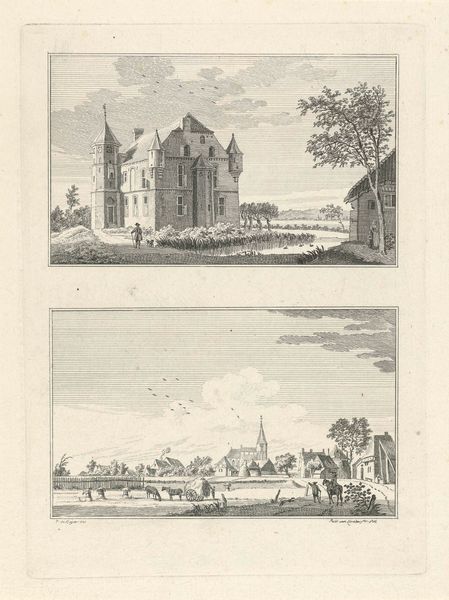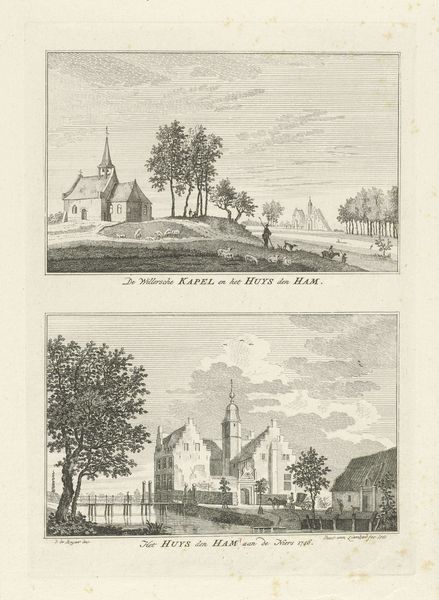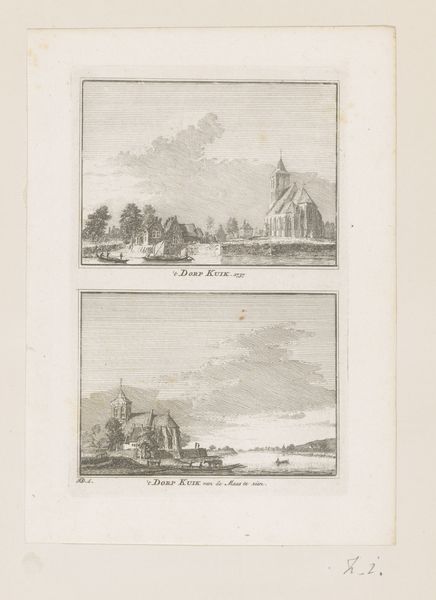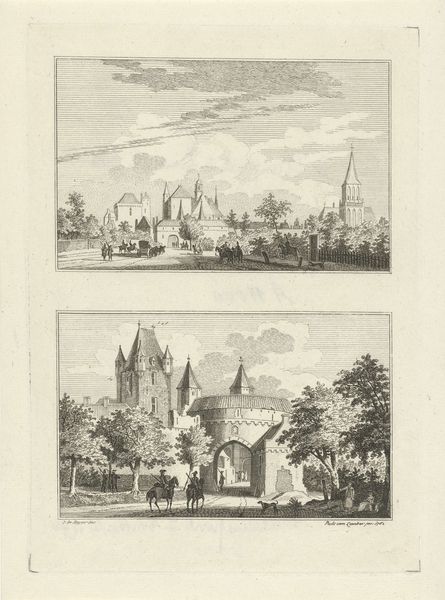
Dimensions: height 211 mm, width 156 mm
Copyright: Rijks Museum: Open Domain
Curator: This is "Gezichten op de Elterberg en de abdij," Views of the Elterberg and the Abbey, created by Paulus van Liender in 1762. It’s a baroque print combining etching and engraving. What do you think? Editor: Well, immediately I'm struck by how it presents these contrasting views—a distant, almost idealized landscape above, juxtaposed with a more immediate, grounded cityscape below. There’s a sense of serenity, but also a rigid orderliness in the architectural details. Curator: It’s interesting you mention the contrast. Van Liender, working in the mid-18th century, was very attuned to the rising merchant class and their interest in detailed, topographical views. This print speaks to the patronage system of the era; prints like these were commodities, circulated amongst those who wanted to appreciate and perhaps display their knowledge of the region. Editor: So, you’re highlighting the socio-economic aspect of production. And that engraving and etching would've demanded particular skills from the artist; they’re labor-intensive processes. Curator: Precisely! Think of the access to skilled artisans needed, the control over the materials, the press...all of which underscores who got to represent the landscape and for whom. It wasn't just about pretty scenery, it was about power and control, rendered in ink. Editor: Looking closer, the top panel displays grazing cattle and tiny figures moving along the waterline beneath a prominent abbey on a hilltop. These elements serve to romanticize the scene, presenting a narrative of agrarian idyll coupled with ecclesiastical influence. How complicit was Van Liender with his patron’s vision? Did the commissioning patron direct what elements and imagery to feature within these compositions? Curator: The art world has always relied upon patronage. The market determined the content of art, and in this particular print, landscape became the prevailing theme through which baroque’s cultural ideals found public expression. Editor: Seeing these juxtaposed images makes me think about contemporary art forms utilizing a combination of engraving, print, and architectural rendering processes to convey the impact of ecological decline. Van Liender’s prints document the built and unbuilt world from a position of colonial and industrial authority. These contrasting artistic intents are something to meditate on when viewing artworks from the past. Curator: Absolutely, and hopefully looking at this print has provided listeners with some understanding of the world that helped to create it, and the methods used to produce it. Editor: I’d concur. Hopefully we’ve offered a deeper context of both the artistry and material implications behind the imagery within Paulus van Liender's work.
Comments
No comments
Be the first to comment and join the conversation on the ultimate creative platform.
